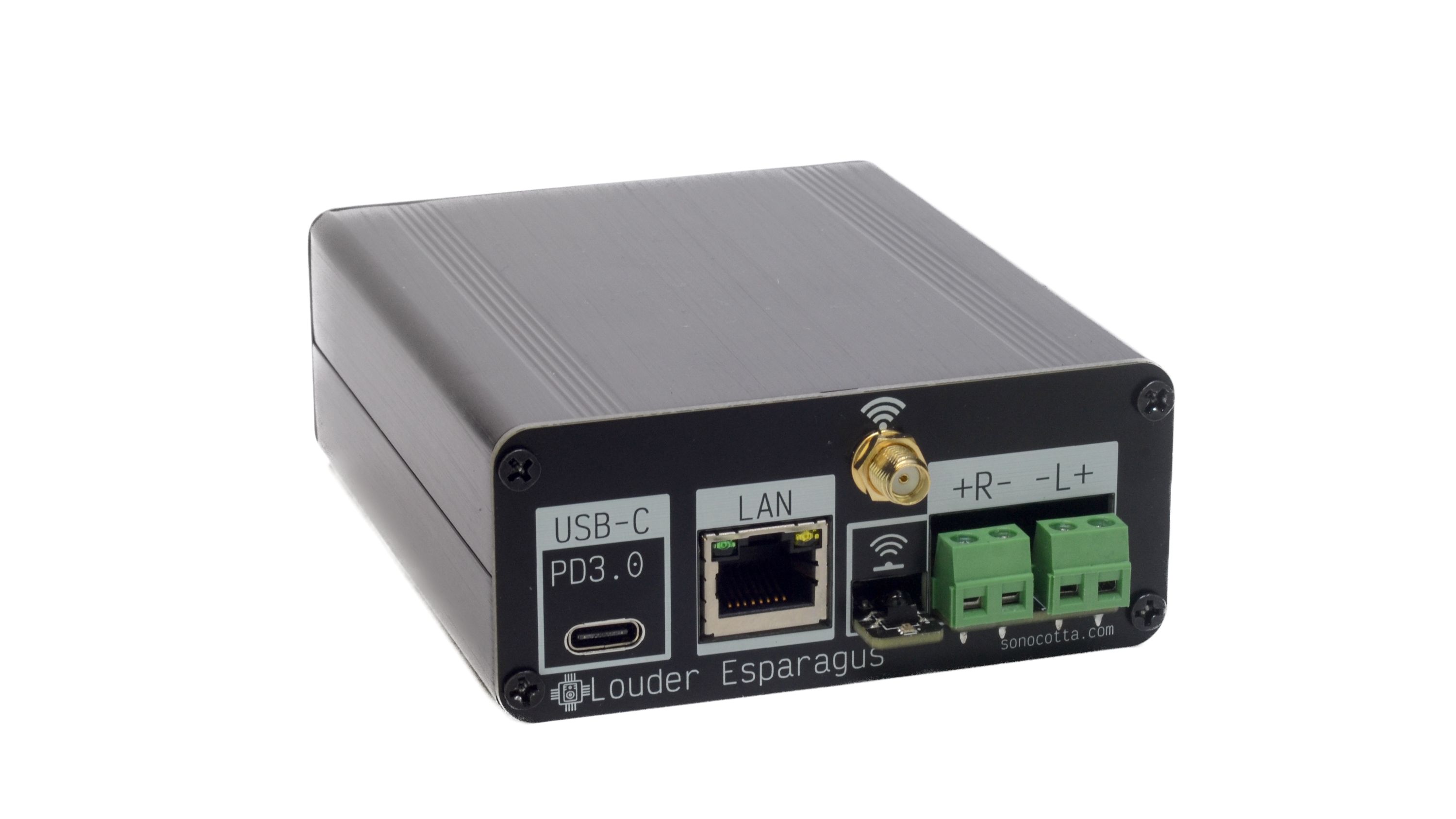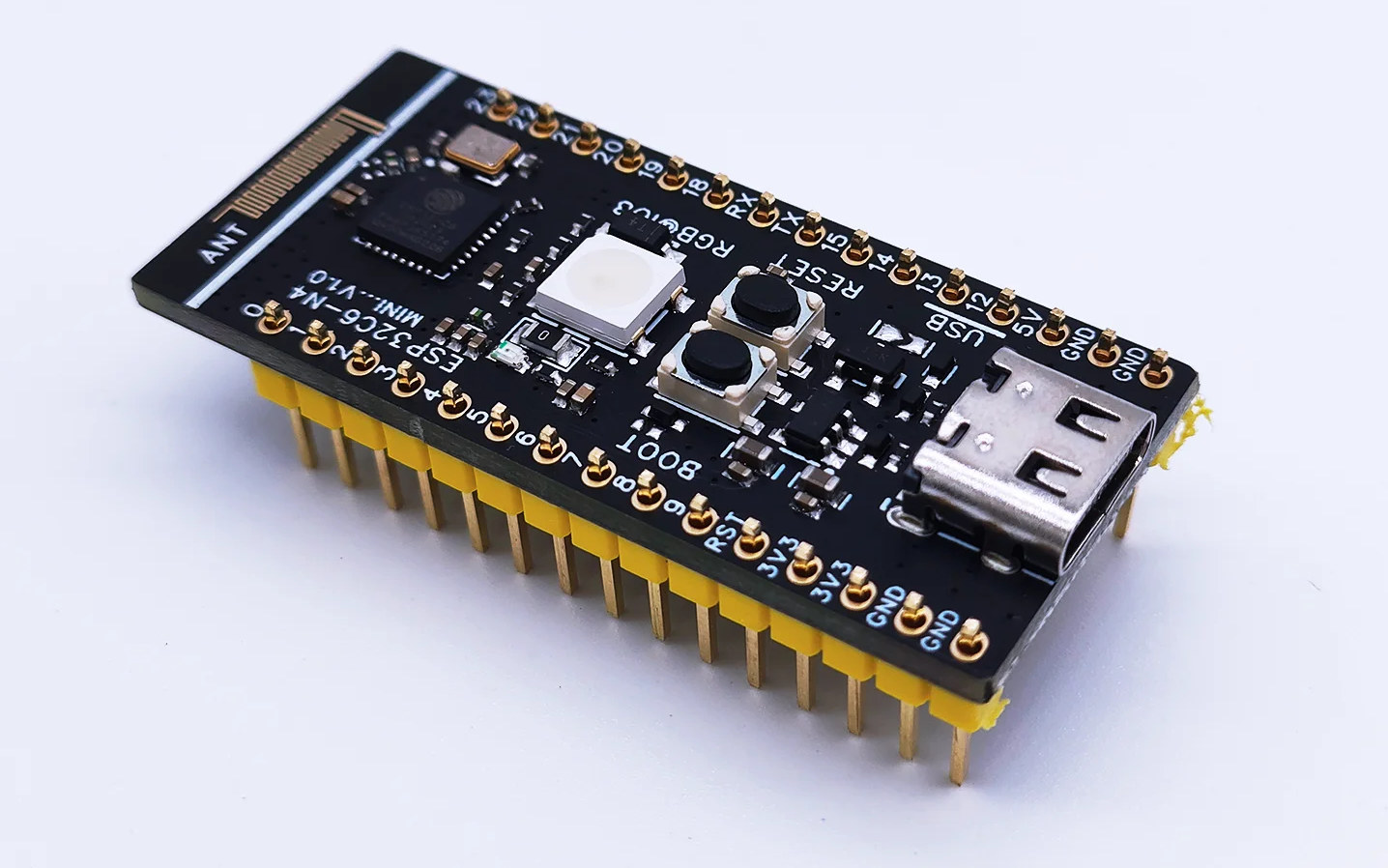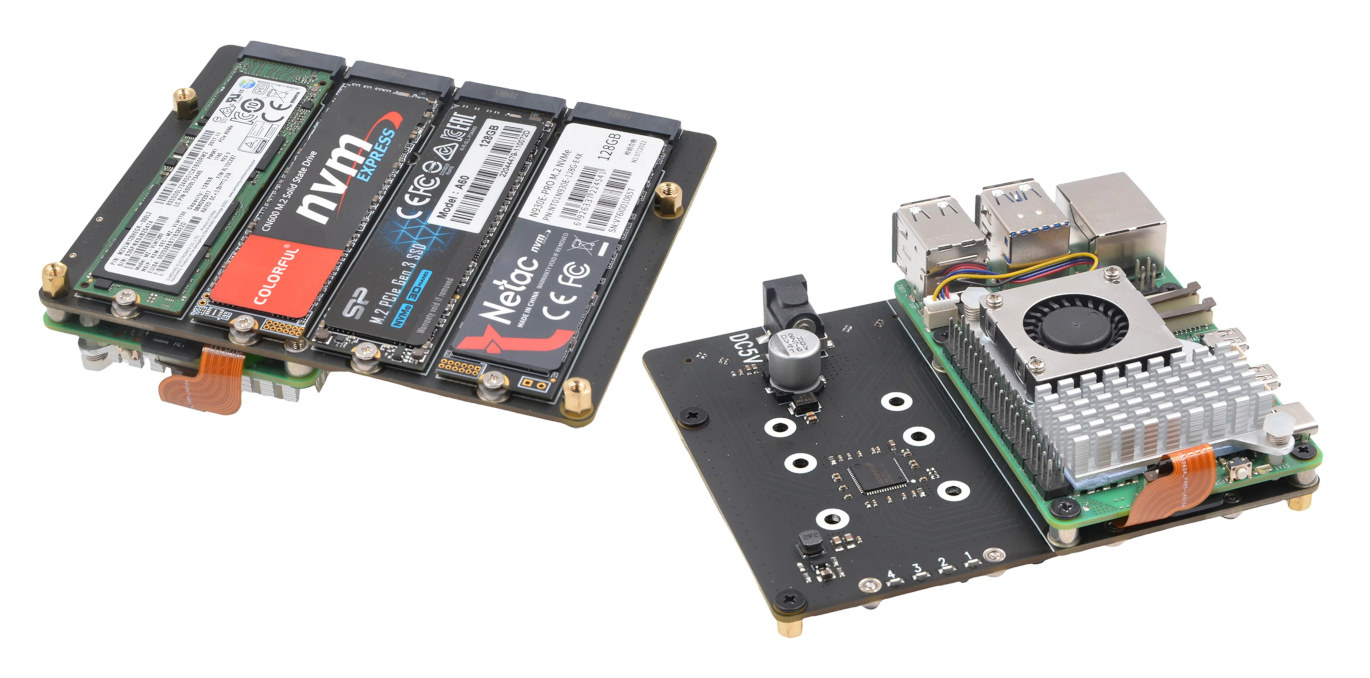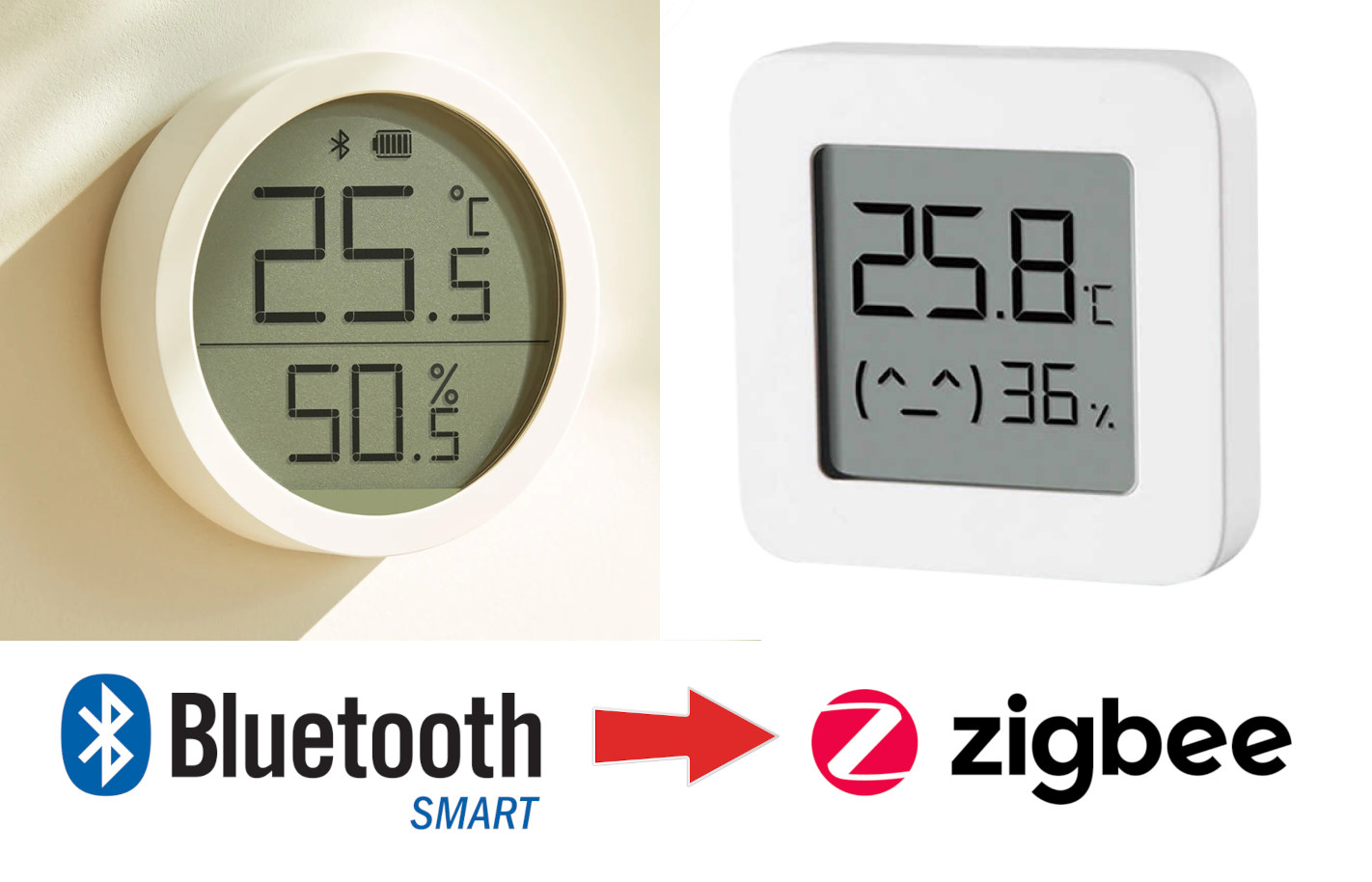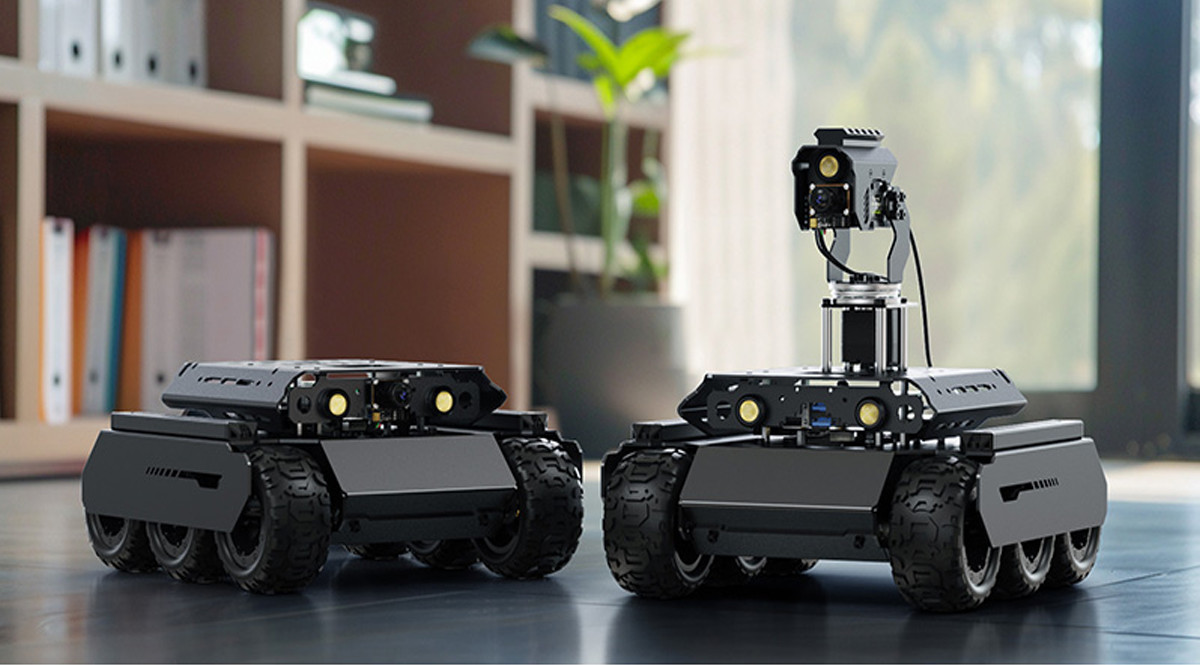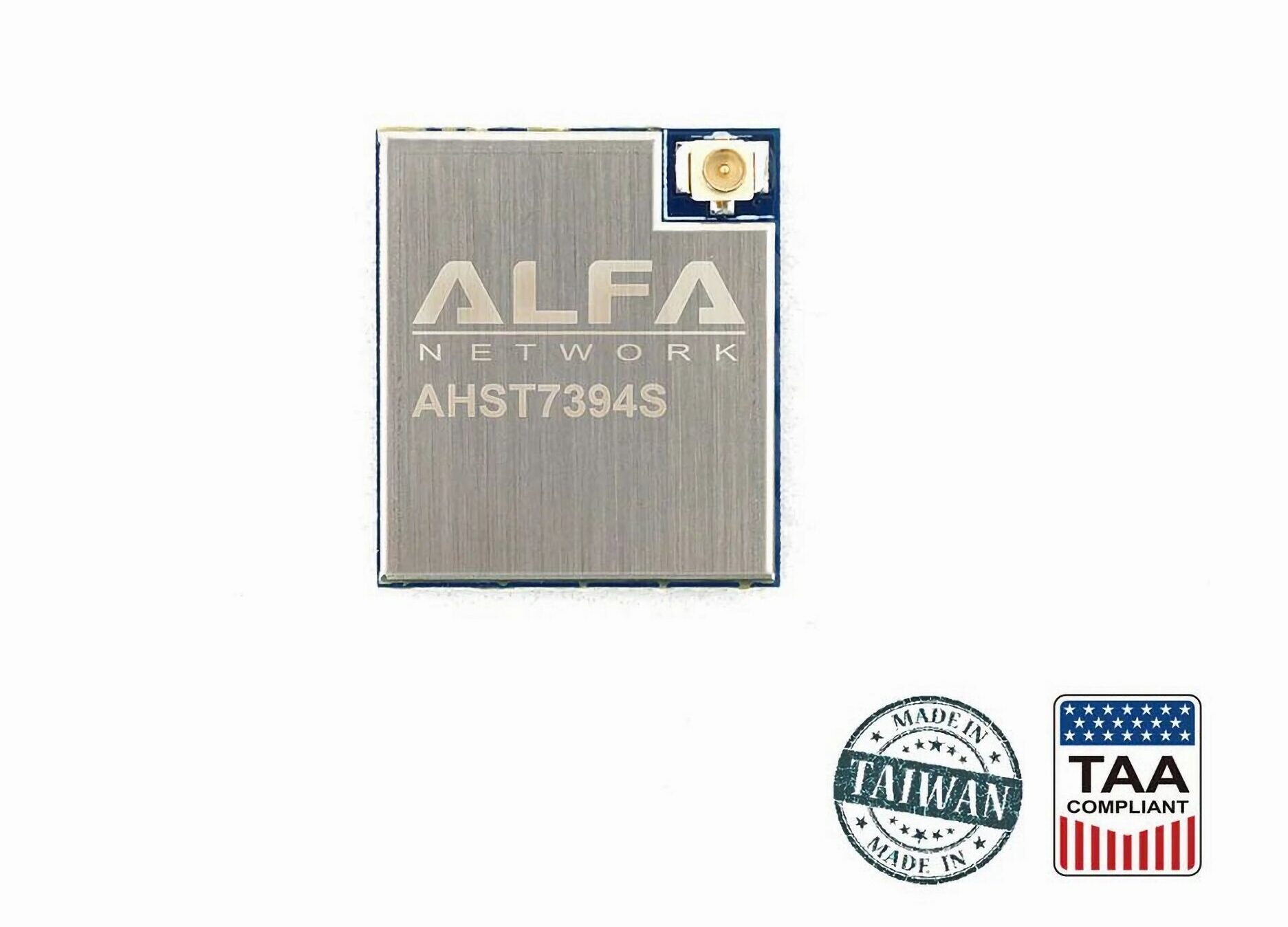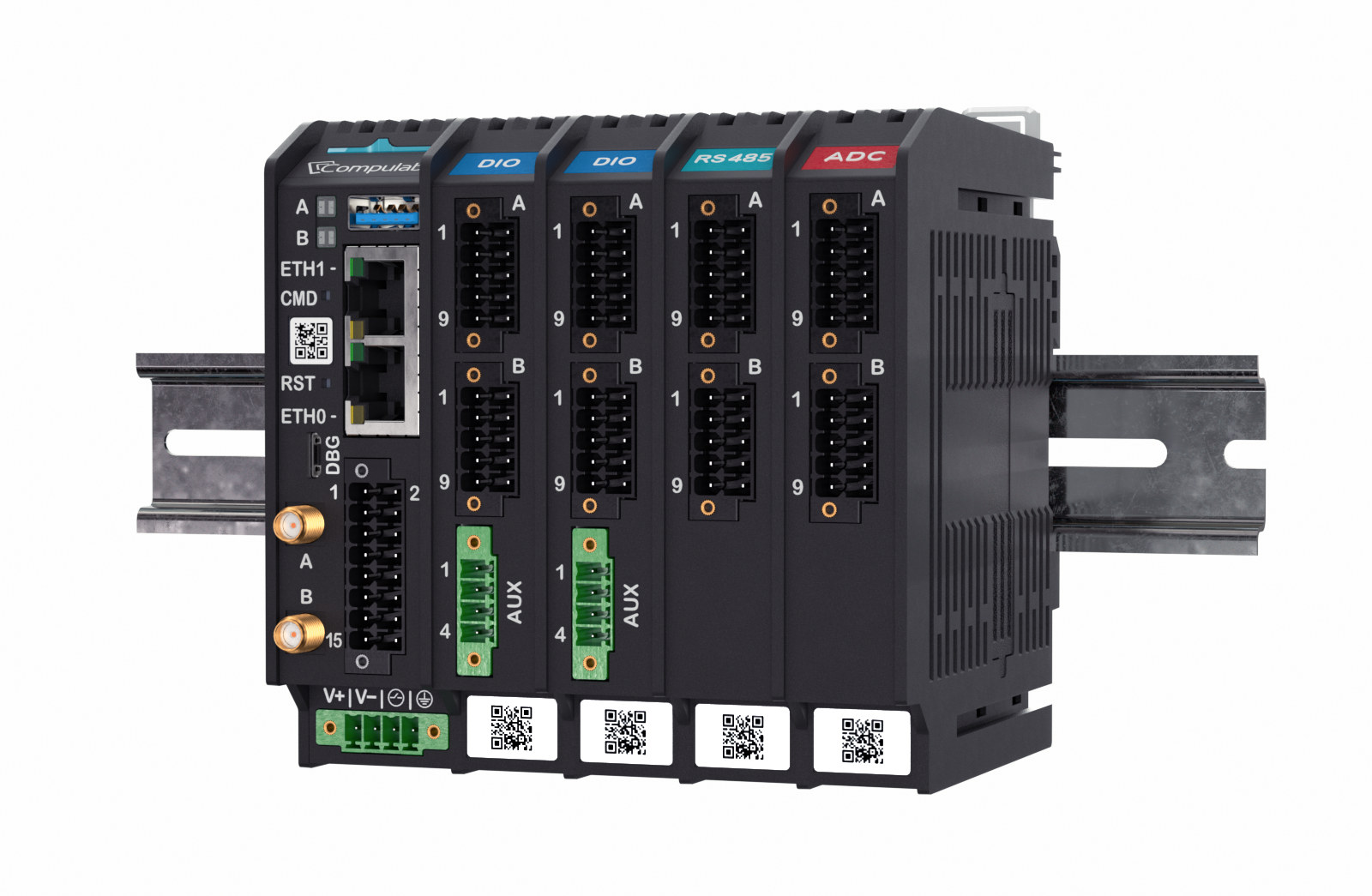ESParagus Media Center is a line of audio streamers from Sonocotta, all powered by an ESP32 microcontroller module. It includes the ESParagus HiFi MediaLink, Loud ESParagus, and the Louder ESParagus. The ESP32-based audio centers can be used to power old stereo speaker systems that lack streaming capabilities. They are completely open-source, consume little power when not in use, and boot up in seconds. The ESParagus Media Center products are based on the ESP32-WROVER microcontroller module with Wi-Fi and Bluetooth connectivity and an onboard PSRAM chip. They are fitted with an external Wi-Fi antenna and the top-end model – the Louder ESParagus – is fitted with a W5500 LAN chip for Ethernet networking. All three ESParagus Media Centers run squeezelite-esp32 firmware which supports Spotify Connect, Apple AirPlay, and Logitech Media Server. Integrations with Home Assistant are possible and can be useful for multi-room configurations. The Louder ESParagus is quite similar to […]
WeAct ESP32-C6-Mini is the cheapest ESP32-C6 board so far going for less than $4
WeAct ESP32-C6-Mini is a small development board based on Espressif Systems ESP32-C6 WiFi 6, Bluetooth, and 802.15.4 wireless SoC that’s the cheapest we’ve seen so far selling for just $3.86 on Aliexpress. WeAct was one of the first companies to launch a third-party ESP32-C6 development board year with the price starting at just $6. I still remember the excitement around the first $5 ESP8266 WiFi 4 module when we first covered it in 2014, and ten years later, we can get a full $4 development board with a more powerful 160 MHz RISC-V microcontroller, WiFi 6, Bluetooth 5.0, and an 802.15.4 radio for Thread, Zigbee, and Matter. WeAct ESP32-C6-Mini specifications: Wireless SoC – ESP32-C6-N4 CPU Single-core 32-bit RISC-V clocked up to 160 MHz Low-power RISC-V core @ up to 20 MHz Memory – 512KB SRAM, 16KB low power SRAM Storage – 320KB ROM, and 4MB flash Wireless – 2.4 GHz […]
Geekworm X1011 board adds up to four NVMe SSDs to the Raspberry Pi 5
Geekworm X1011 is a new expansion board for the Raspberry Pi 5 with four M.2 sockets enabling the insertion of up to four M.2 NVMe SSDs with data pushed through the PCIe Gen2 interface of the popular SBC. We were already wondering why most people would want to connect two NVMe SSDs to the Raspberry Pi 5 when the Geekworm X1004 HAT+ was launched considering the 5GT/s limitation from the board and the PCIe switch, but the company decided to double the number of drives with the X1011 meaning each drive can achieve up to around 100 MB/s (or 400MB/s) when used simultaneously. It does look nice and fairly compact though. Geekworm X1011 specifications: Supported SBC – Raspberry Pi 5 and other SBCs with a compatible 16-pin PCIe FPC connector and mounting holes Chipset – ASMedia ASM1184e PCI express packet switch with 1x PCIe Gen2 x1 upstream port and 4x […]
Enabling Zigbee in Bluetooth LE temperature and humidity monitors from Xiaomi and Qingping using Telink TLSR8258 WiSoC
Qingping CGDK2 and Xiaomi LYWSD03MMC Bluetooth LE (BLE) temperature and humidity monitors based on Telink TLSR8258 can be switched to Zigbee thanks to a custom firmware flashed over-the-air. Telink TLS8258 is a multi-protocol wireless microcontroller supporting Bluetooth LE 5, Bluetooth Mesh, Zigbee, RF4CE, Thread, 6LoWPAN, HomeKit, ANT, and 2.4GHz proprietary and found in boards such as the LILYGO T-Zigbee and various products. Some products only enable one wireless protocol, for example, Bluetooth LE as in the just-mentioned Qingping and Xiaomi monitors, but “SmartHomeScene” has found out that it was possible to switch from BLE to Zigbee on those by simply updating the firmware. The Telink TLS8258 devices mentioned above will publish data over BLE every 10 minutes (unless humidity or temperature changes, in which case data is transmitted immediately) with the default firmware, but Zigbee can be enabled by using the pvvx custom firmware for the following models: Xiaomi LYWSD03MMC […]
Waveshare UGV Rover – A 6-wheel AI robot built around Raspberry Pi 4/5 and ESP32
The Waveshare UGV Rover is a 6-wheel robot platform based on Raspberry Pi 4 or 5 as well as an ESP32 module and built for remote exploration, object recognition, and autonomous navigation. Since the source code for the platform will be open-sourced it can also be used for educational purposes, programming, robotics, AI experimentation, and many other applications. This Unmanned Ground Vehicle (UGV) rover features a 2mm thick aluminum body, six 80mm shock-absorbing tires, and a four-wheel drive system controlled by an ESP32 sub-controller. The sub-controller also handles sensors, LiDAR, cameras, and more. The brain or the main controller of the rover is a Raspberry Pi SBC – either a Pi 4B or Pi 5 – which notably handles computer vision and machine learning operations. Since the mounting holes are designed to fit a Raspberry Pi, it is safe to assume that it will fit other SBCs with the same […]
Alfa Networks AHST7394S Wi-Fi HaLow module enables low-power, long-range IoT connectivity up to 1km
Taiwanese wireless equipment manufacturer, Alfa Networks, and US-based Wi-Fi HaLow semiconductor company, Newracom, have collaborated to develop the AHST7394S Wi-Fi HaLow module. The solder-down module is based on Newracom’s NRC7394 SoC, a low-cost and high-efficiency HaLow SoC chipset providing up to 17dbm output power and capable of connecting to a maximum of 8K devices within a single network. The NRC7394 also supports a standalone mode, which enables the execution of a wide range of IoT applications on the embedded ARM Cortex-M3 CPU. While HaLow is more energy-efficient than other Wi-Fi types, low-power operation modes such as legacy, TWT, and WMM-PS can reduce power consumption further. The AHST7394S Wi-Fi HaLow module supports a data rate of up to 15Mbps, over 600 times faster than LoRaWAN while maintaining a good range (over 1km). The second-generation HaLow module is perfect for building long-range, ultra-low-power networks in sub-1 GHz, license-exempt frequency bands. It is a […]
NXP i.MX 8M Plus powered DIN-Rail IoT gateway takes DIO, RS232, RS485, and ADC expansion modules
Compulab IOT-DIN-IMX8PLUS is a DIN Rail IoT gateway powered by an NXP i.MX 8M Plus AI SoC that takes various expansion modules with digital inputs and outputs (DIO), RS232, RS485, or ADC. The new model looks to be an evolution of the Compulab IOT-GATE-IMX8PLUS Arm Linux IoT gateway introduced in 2022 with many of the same features, except the IOT-DIN-IMX8PLUS is designed to be installed in a cabinet or other installation with a DIN Rail, and can easily be connected to additional I/O modules. Compulab IOT-DIN-IMX8PLUS specifications: SoC – NXP i.MX 8M Plus Quad or Quad-lite CPU Quad-core Arm Cortex-A53 processor @ up to 1.8 GHz Arm Cortex-M7 real-time core @ 800 MHz GPU – Vivante GC7000UL 3D GPU, Vivante GC520L 2D GPU VPU – 1080p H.265/H.264 video decoder & encoder DSP HiFi 4 DSP AI accelerator – 2.3 TOPS Neural Processing Unit (NPU) on i.MX 8M Plus Quad only […]
Yocto Project 5.0 “Scarthgap” released with Linux 6.6 and plenty of changes
The Yocto Project 5.0 codenamed “Scarthgap” has just been released with Linux 6.6, glibc 2.39, LLVM 18.1, and over 300 other recipe upgrades. As a result of the release, the developers have made it available for download (bz2 tarball). The Yocto Project, or Yocto for shorts, is a popular framework used to create custom embedded Linux distributions, and we’ve played with it over the year showing how to create a minimal image for the Raspberry Pi, and last year, we used it again when reviewing two industrial development boards, namely the VOIPAC IMX8M and ADLINK i-Pi SMARC 1200. Yocto is quite a powerful framework/build system with plenty of options that make it highly customizable, but the learning curve is fairly steep. Some other changes in Yocto Project 5.0 include: New variables: CVE_DB_INCR_UPDATE_AGE_THRES: Configure the maximum age of the internal CVE database for incremental update (instead of a full redownload). RPMBUILD_EXTRA_PARAMS: […]


